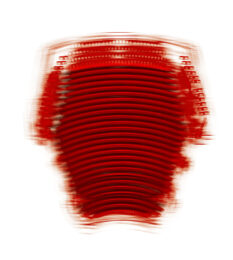


Born in 1961 in Buenos Aires, Guillermo Kuitca is part of a movement of contemporary art called known as ‘geographical’. In the early 1980s, he experimented with the theatrical aspect by incorporating scenic spaces into his paintings. In the 1990s, he expanded his prism by exploring the themes of architecture and topography to combine public and private spaces. He has exhibited his work all over the world: from the Tate Gallery in London to the Metropolitan Museum in New York to the Daros Collection in Zurich. He also represented Argentina at the Biennale in Venice in 2007. Today, some of his works are exhibited at the Art Institute of Chicago, The Museum of Modern Art in New York, and the Stedelijk Museum in Amsterdam, among others.
The recurring themes in his work are travelling and memory. In his early work, the character was an important element, and his small format paintings from the 1980s are directly related to drawings of female silhouettes. The individual was replaced in the 1990s by aspects of the human experience in different places or environments, through themes such as cartography, theatre and architecture. After concentrating on producing purely abstract paintings since 2007, it is only recently that Kuitca has consciously decided to return to the depiction of the human figure.